Our aim is to establish the highest standards of behaviour possible in a calm and encouraging environment in which positive behaviours and attitudes for successful learning and mutual respect take place. This will be achieved by everyone working together collaboratively and constructively with children to ensure they understand the expectations we have in terms of behaviour and conduct. This is based on a commitment to spend time ensuring children are given clear boundaries, encouraged to reflect on and learn about how their behaviour affects others and to support them in developing empathy with those around them. This will be fostered within a calm and purposeful environment in which the development of respectful relationships is seen as a priority.
Woodlands Academy has three core values, which should be evident in every lesson, corridor and playground every day. Our aim is ‘to enable our pupils to be independent, confident members of the community who are equipped with skills to be lifelong learners to engage with their dreams and aspirations’.
Ready Respectful Resilient
Our behaviour expectations link directly to our values.
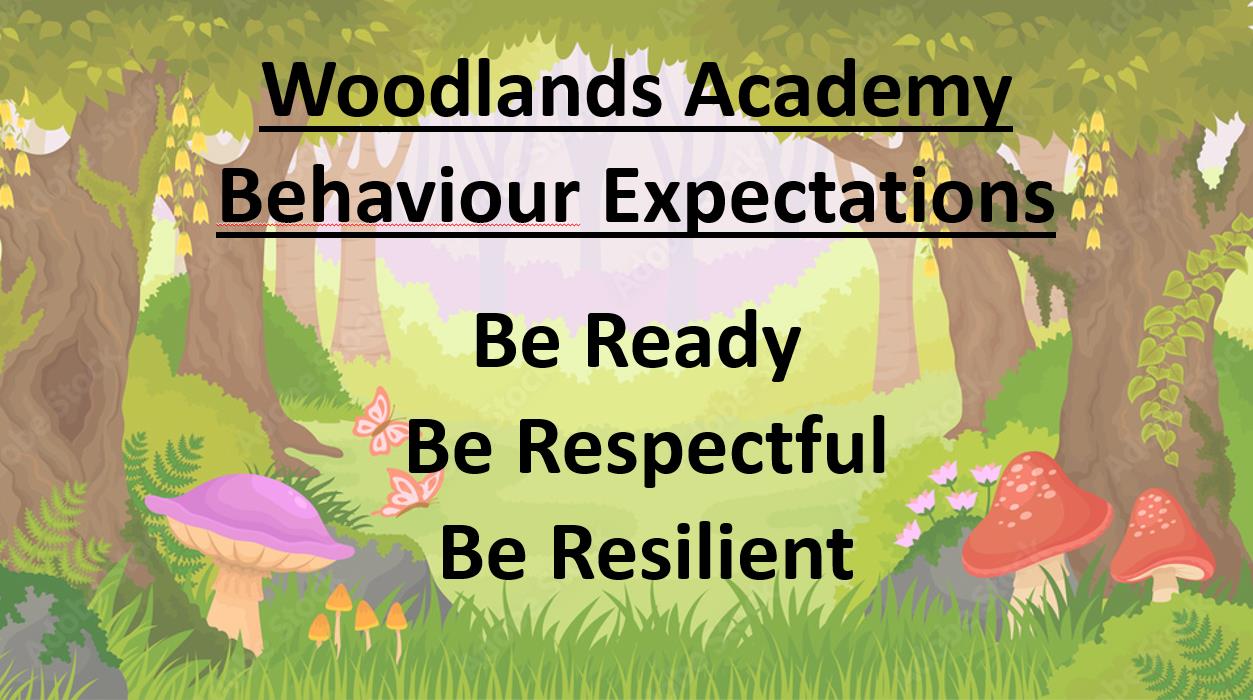 Generally, behaviour at Woodlands Academy is very good. Our success has been based on praising and rewarding children’s efforts and a consistent approach by all adults. We have a number of ways of praising children for behaving well and working hard.
Generally, behaviour at Woodlands Academy is very good. Our success has been based on praising and rewarding children’s efforts and a consistent approach by all adults. We have a number of ways of praising children for behaving well and working hard.
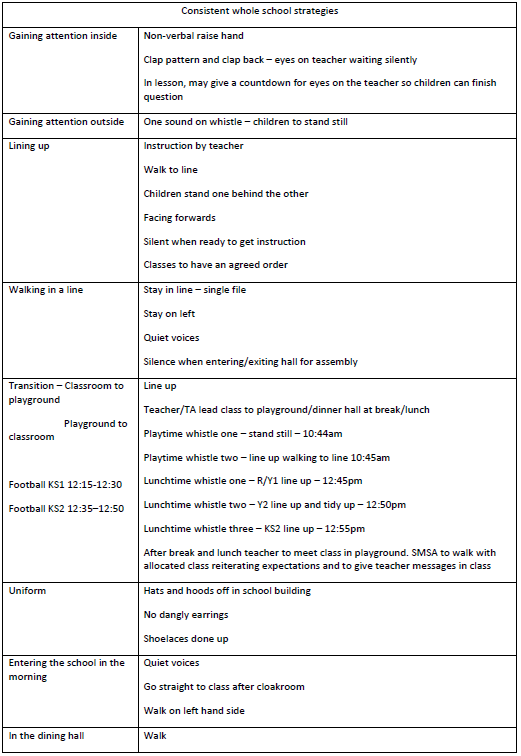
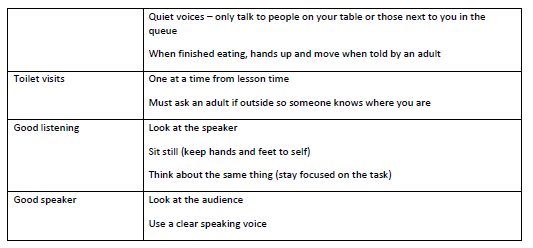
At Woodlands Academy, we use a meta-cognition approach to help learners think about their own learning explicitly.
Pink – the power to communicate Green – the power to manage emotions
Orange – the power to give maximum effort Purple – the power to collaborate
Blue – the power to stay focused Yellow – the power to make links
Red – the power to be aware of others Lime – the power to problem solve
Our ‘in class’ behaviour system links to a staged chart that we have in each classroom. The format of these differ depending on the age of the children. Some are colours and some are pictures.
Everyone starts on the neutral stage at the beginning of each day and to move up the chart children need to show exemplary learning, behaviour and behaviour for learning. This process is in place to recognise those children that work hard and do their best every day and to give greater incentive to those that struggle sometimes. Children cannot move down the chart for poor behaviour. Classes agree their own rewards for being high up on the chart, but they may include an agreed number of golden tickets for each stage.
Incidents of racism, sexism, harassment, victimisation, sexualised behaviour and homophobia are dealt with very severely. The parents/carers of the victim(s) and the perpetrator(s) are contacted immediately. All incidents are logged and reported to the Local Academy Councillors and Trustees.
Counselling will be available, if required, for victims or perpetrators.
All children have the right to learn and work in an environment where they feel safe and that is free from harassment and bullying. As with racism, incidents where bullying is proven are dealt with very seriously. The parents/carers of the victim(s) and the perpetrator(s) are contacted immediately (for further details please refer to the MATs anti-bullying policy).
We believe it is very important to frequently acknowledge and celebrate pupil achievement in all aspects of school life; therefore, rewards are an extremely important part of Woodlands Academy’s culture. The most effective and positive strategy for dealing with behaviour is to ‘catch children being good’ and ‘rewarding effort’.
Children will be rewarded, please see below for some examples of how we reward excellent behaviour:
Each Friday a celebration assembly is held and a number of awards from different members of the academy community are presented.
On the rare occasions where we have to address behaviours that fall below our expectations, Woodlands Academy has in place a set of consequences. Consequences are applied consistently and recorded in line with this policy. Behaviour and consequences are categorised across 5 levels and can be found below.
If any adult sees poor behaviour this will be recorded in the class behaviour file. Every time a poor behaviour is seen there will be a consequence. These might be:
Parents will receive a letter after the following number of warnings in each category (with the exception of nursery):
Level 1 – on the 4th and final warning
Level 2 – on the 3rd and final warning
Level 3, 4 & 5 – on the 1st warning
Children who miss playtime or receive a lunchtime detention will be required to complete reflection sheets or have a discussion with the detention leader to help them understand the impact their behaviour choices are having on themselves and others and to help school support them to make better behaviour choices and put support in place as is appropriate.
Each class teacher maintains a class behaviour file to store all proformas and keep behaviour records. A Senior Leader collects these records each term and the data is collated. Each child’s behaviour sheet is replenished every term (six times a year). Level 3+ behaviours are recorded on CPOMS.
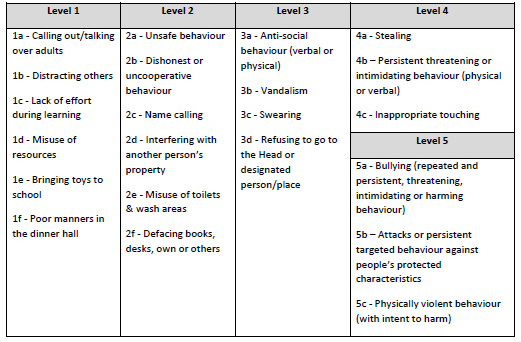
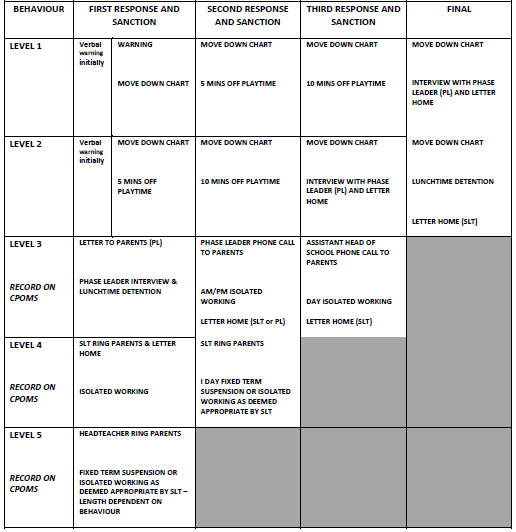
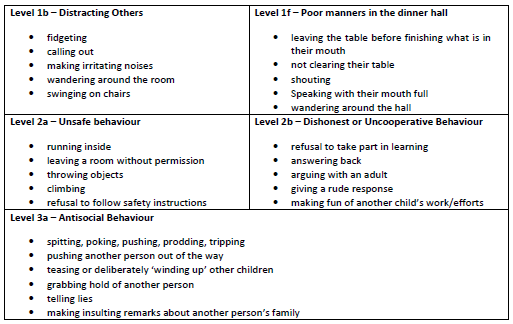
In some circumstances, staff may use reasonable force to restrain a pupil to prevent them:
Incidents of physical restraint must always be used as a last resort, be done by trained adults and be applied using the minimum amount of force for the minimum amount of time possible. It must be used in a way that maintains the safety and dignity of all concerned and should never be used as a form of punishment. Incidents where physical restraint is necessary, it must be recorded in the bound and numbered book and reported to parents.
When a pupil is in a heightened emotional state (dysregulated), staff will endeavour to de-escalate and help the pupil to regulate their emotions by:
